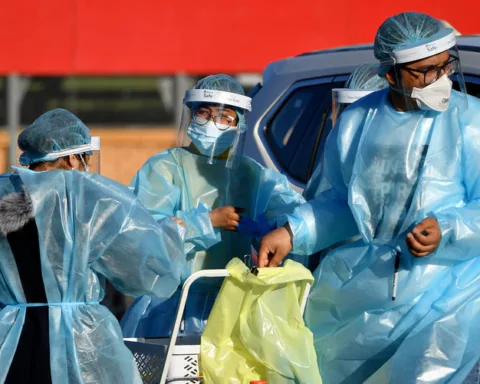A salmonella outbreak this past week has alarmed the authorities because there is no food source that they can trace it back. This week, the number of infections has doubled.
On Sept. 15, the Centers for Disease Control and Prevention (CDC) reported that 127 people had been infected. According to USA Today, the patients are from 25 different states, and it resulted in 18 hospitalizations.
On Sept. 23, the CDC announced the total number of illnesses, and the number has doubled. From 127, the number of infected patients is now 279, and from 25 states, the outbreak has reached about 29 states, according to Healthline.
From 18 hospitalizations, there are now 26 reported hospitalized patients.
On Thursday, the CDC announced the number of reported illness had more than doubled: 279 people have been sickened, and the outbreak has reached another four states. An additional eight people have now been hospitalized because of salmonella.
On Sept. 2, 20 people were said to have been sick because of Salmonella Oranienburg. Since then, the CDC stated that the salmonella outbreak had grown rapidly.
The medical authorities can’t pinpoint a food source that has been attributed to the outbreak, but both state and local officials from the infected 29 states have collected food samples from the restaurants where the patients ate, and they found salmonella in a condiment cup that has lime and cilantro.
No food source has been attributed to the outbreak, but state and local officials from infected states have collected food samples from restaurants where sick people ate and found salmonella in a condiment cup containing cilantro and lime. The cup also had onions, but they weren’t inside when the food was tested.
“Because multiple food items were present in the container and in the sample that was tested, it is not possible to know which food item was contaminated. We are using this information in conjunction with other available information to help narrow the list of possible foods linked to illness,” the agency said in a statement.
Health officials also believe true number of infections is much higher than reported as some people recover from salmonella without medical care and therefore are not tested for it. It can also takes up to four weeks to determine whether someone was part of an outbreak.
The CDC said in a statement that because multiple food items were present in the container and in the sample that they’ve tested, they found it difficult to know exactly which food item was contaminated and caused the sickness.
The agency is now using this data to narrow the list of possible foods that caused the outbreak.
This means they were not tested for it when they had it. It also takes at least four weeks to know whether someone was part of an outbreak, according to KTLA.
CDC Reveals Data on Outbreak
The CDC data shows that the salmonella outbreak has stretched across the United States. The states that have the most cases are Texas, with a total of 81 patients, and Oklahoma, with 40 patients.
Other states with outbreaks include Illinois, with a total of 23 patients, Virginia, with 22 patients; and Minnesota, with a total of 19 patients.
The infected people have a wide age range, the youngest patient is less than a year old, and the oldest patient is 89 years old. Around 59% of the patients are females. Fortunately, no deaths have been reported.
The symptoms of salmonella infection include vomiting, fever, diarrhea, dehydration, and stomach cramps.
The symptoms start six hours to six days after being exposed to the bacteria. Most people recover from it without any treatment, and the recovery period lasts from four to several days.
Children under the age of 5, and people who are 65 years and older, and those who have weak immune systems may experience severe illness from salmonella.
In August, 862,000 pounds of uncured antipasto products were recalled by the CDC for salmonella contamination that caused an outbreak across 17 states.
The CDC recommends people practice food safety measures like washing their hands before eating, cleaning the utensils and separating foods, and making sure that all of them are cooked properly.






